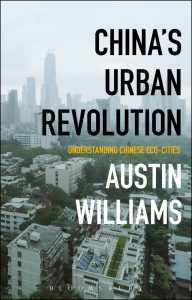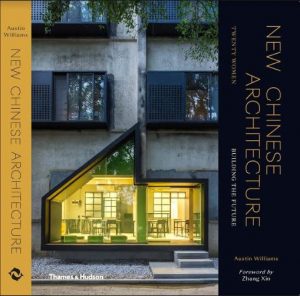Masterplanning the Future
By Austin Williams | 6 December 2012
The great American urbanist Daniel Burnham, the man who drafted the first comprehensive city plan a century ago, summed up the necessary ambition involved in the art of city-making: “Make no little plans,” he said. “They have no magic to stir men’s blood.”
For a Western architect like myself arriving in China, four things are immediately apparent: one is the breakneck ‘speed’ of the construction industry; the second is the immense ‘scale’ of urban development; and a third is the underlying ‘confidence’ to make big plans. The final factor – the X-factor – is the ‘ambition’ to build new cities, and it is this that sets China apart and makes it such an exciting place to live. Where else can you watch a modern city grow and change before your very eyes?
To attempt such a huge project of social transformation, elevating millions out of poverty through a process of urban expansion is notable precisely because of its absence in much of the Western hemisphere. Indeed, the sad decline of urban scale masterplanning in the UK and America, where no significant urban settlement has been built in the last two generations, simply makes China interesting by default. A visit to the Urban Planning Museum in Shanghai sums it up. The centrepiece of its exhibition is a vast model of central Shanghai which maps out the existing, but more importantly, the planned developments over the next 20 years. Here, the model is “the future”. Conversely, in Britain for example, the Prime Minister has just announced his plans to recreate the past: a blueprint of urban villages derived from the Victorian era.
Undoubtedly, China’s overarching – some might say ‘ruthless’ – ambition to build the future, comes with caveats. Construction standards are low, workmanship is poor (and so are the working conditions), pollution is high and the architecture leaves a lot to be desired. But simply to attempt such a huge range of masterplanning projects is impressive, and laudable. China is compressing 75 years of Victorian urbanisation into just fifteen.
Indeed, planning for super-urbanised areas, such as the Chongqing-Chengdu or Wuhan-Changsha zonal developments is equivalent to masterplanning Belgium! Nothing like this has ever been undertaken before and a wealth of expertise is needed to ensure that the problems (for there will be problems) are minimised.
Chinais now on target to create an urbanised population (statistically consistent with a developed economy) within the next decade or so. Ironically, a recent OECD report suggests that China already has far more towns “that would be administratively defined as cities”, but it is generally accepted that with just 50 per cent of its population living in urban areas, it has still a long way to go to match the 70-80 per cent of most Western countries.
China therefore has a lot to learn – and a lot to gain – from the West, where there is a wealth of masterplanning skills and theory to draw on. To its credit, China has welcomed the experience and judgment of Western urbanists and architects – many of whom may not have built cities (or anything) before, but who should at least have studied the form, construction and flows of cities and who can conceptualise masterplanning as a socially-engaged, human-centred process rather than a technical exercise. Until a generation of home-grown, non-technocratic designers are produced by Chinese universities – one thing that is central to our educational efforts at XJTLU, (my university in Suzhou) – it may be easier to import creative, critical thinkers from far afield. Their knowledge and their ability to apply abstract ideas to socio-urban issues is an extremely valuable resource.
However, China is also in danger of importing some of the worst ideas from the West, too. Nowadays, the US and Europe are burdened with a cautious approach to development, growth and progress. This is often represented in calls for restraint, limits, risk-aversion, precaution, low growth and minimal consumption. Sustainability, for example – an orthodoxy that views the future with trepidation rather than anticipation – is a defining feature of this modern malaise. Sustainability is designed to rein in so-called human hubris: it insists that we ” do not do things today that may cause harm to future generations”. But once humanity conceives of itself as potentially harmful rather than potentially liberating, then the notion of human intervention in the natural world (a euphemism for architecture) takes on a negative connotation. Even though many people think that they can subvert its use, the adoption of the label “sustainability” is playing with fire.
However you try to spin it, “sustainable growth” is not the same thing as “growth”; it is stunted growth. “Sustainable” development is not the same as “real” development; it is arrested development. We should be aware that the philosophical embrace of restraint, limits and the aversion to experimentation and risk-taking will simply act as a brake on the positive, human-centred, arrogance required to masterplan the future.
Austin Williams is lecturer in architecture and urban design at Xi’an Jiaotong-Liverpool University, Suzhou, Jiangsu Province, PR China.






